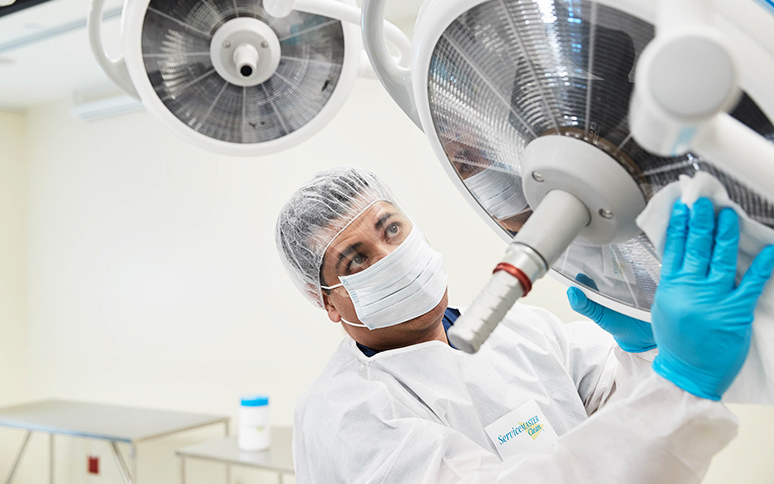Best Practices for Clean Workstatsions in Hospitals
Although medical facilities can be busy places to work, common cleaning routines shouldn’t be skipped. According to the Centers for Disease Control and Prevention (CDC), areas that are touched by hand, like those at nurse’s workstations, could contribute to secondary transmission by contaminating hands that subsequently contact patients. In order to reduce the spread of healthcare-associated infections (HAIs), use these tips from ServiceMaster Clean to properly clean and disinfect your workstations.
HAIs Can Be Avoided
Maintaining a clean hospital working environment is the most practical way to prevent the spread of infectious diseases and illnesses. The CDC estimates that on any given day, 1 in every 25 patients suffers an infection after being treated in a medical facility. In one year, HAIs accounted for about 75,000 deaths. To ensure that your facility, your patients and your staff stay safe, it’s crucial to follow cleaning and disinfecting protocols throughout the hospital. That includes areas that don’t always come into contact with patients, like nurse workstations and hospital computers.
Best Practices for Cleaning Your Workstations
Even if a surface doesn't look dirty, germs and other microorganisms can easily hide on equipment. To reduce the risks associated with secondary transmission of illness or infection, all hospital staff should be encouraged to regularly take the following steps toward cleanliness:
- Maintain good hand hygiene.
- Refrain from wearing gloves when using computers and laptops.
- Frequently wipe off individual pieces of equipment like keyboard covers, computer cases, cords and mice with proper disinfecting wipes.
- Regularly dust and wipe off keyboard monitors.
- Wipe arm supports at computer stations.
- Use hand sanitizer after using computers and before interacting with patients.
- Clean and disinfect mobile hospital computer workstations before and after visiting each patient's room.
Remember, high-touch surfaces in hospitals such as phones, light switches, tray tables, door handles, faucet handles and chairs frequently come into contact with hands. Healthcare professionals should pay special attention to keeping high-touch surfaces and areas clean and disinfected to prevent the spread of germs and bacteria.
Understanding a Comprehensive Decontamination Process
There are many key differences between cleaning, sanitizing and decontaminating a healthcare facility. To ensure that your work stations stay consistently clean, learn the differences between each type of cleaning:
- Cleaning: This involves simply removing evidence of visible dirt from the surface. Oftentimes, it doesn’t completely eliminate the presence of germs.
- Sanitizing: This can reduce the level of bacteria on most hospital surfaces to minimize the likelihood of the spread of infection. In many cases, sanitizing the area may not completely kill all viruses.
- Disinfecting: This will eliminate pathogens and disease-causing microorganisms. Hospital-grade disinfectants should be used to destroy infections within your facility.
While your healthcare staff may frequently clean throughout the day, having a professionally trained team to clean, sanitize and disinfect surfaces as needed in your facility can help reduce the spread of infection. Use the healthcare cleaning services from the experts at ServiceMaster Clean to help with infection control and prevention, risk reduction and overall environment improvement.








